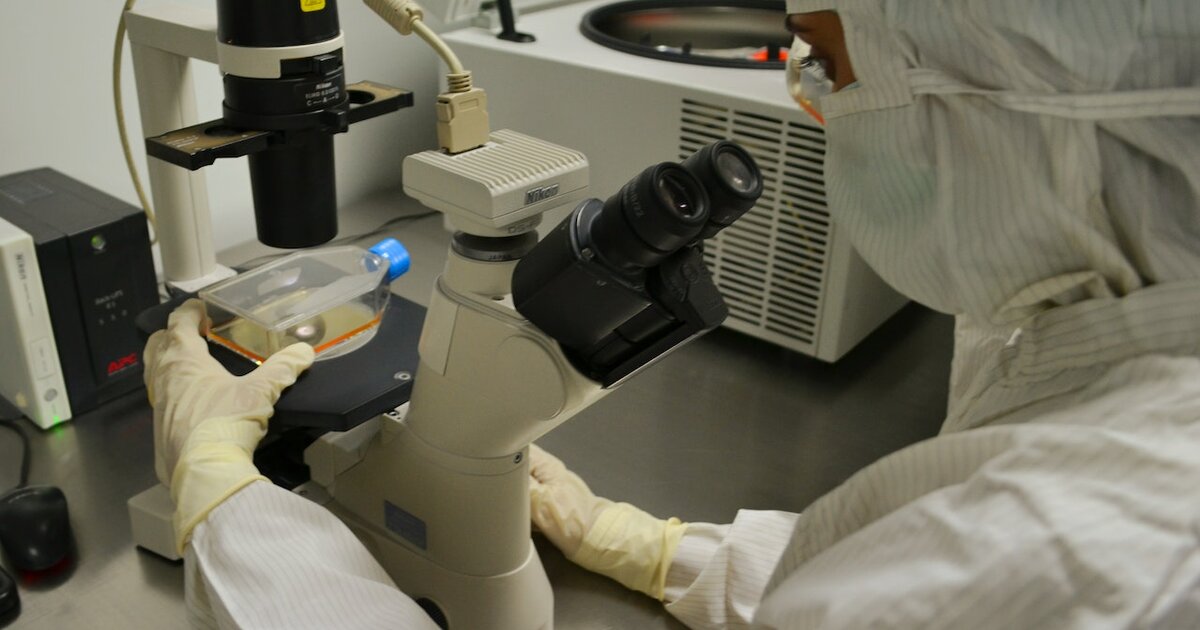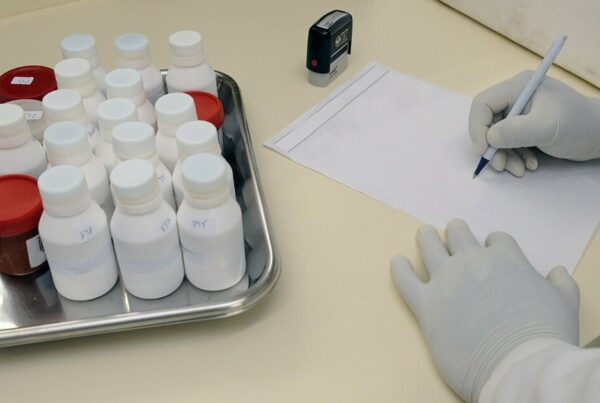Clinical trials site selection should be a matter of choosing the optimal location for every study. However, this is often not the case, with sponsors instead choosing based on previous good experience at a site. If that experience comes from trials that are vastly different from the one being proposed, this can lead to severe impacts on the power of the study itself.
Instead, there we’re going to look at some of the strategies available to make a better job of finding the optimal site for each study. But first, let’s go over why that’s so important.
The Importance of Site Selection for Clinical Trials
Among all the challenges faced in clinical trials, one of the earliest and most significant is recruitment. 55% of terminated trials were found to be a product of low accrual rates, and recruitment efficiency is usually less than 40%. Further, 80% of trials globally fail to recruit on time.
Site selection plays a significant role in addressing these figures, and by helping to hit such an early deadline, can have significant implications on the overall chances of trials meeting their delivery dates. Sites that are not able to recruit sufficient patients will therefore critically affect the desired outcomes of the study, often to an irreconcilable degree.
The cost of opening and closing a site is also significant. Selecting bad sites is not just a risk to deadlines, but a potentially expensive mistake in which the average cost to select effective sites goes up significantly.
Further costs are incurred when a site produces poor-quality data, increasing the need for monitoring visits and expensive, time-consuming data queries, and potentially skew any meaningful statistical approach to reporting outcomes as a result of that data.
While cost, time, and quality factors are regularly considered in decision-making when designing a research program, relatively little effort goes into the study of optimal research location, despite the decision having the same implications to study success.
However, improvements to study analytics in the form of more powerful statistical approaches and better data collection, have led to a better understanding of what makes a site optimal, and how to find one. The first step is to understand some basic factors that make a site worth considering.
The Current State of Research Site Selection
One key mistake that sponsors make when selecting a trial is to go with what’s familiar. There are more factors at play in making a site optimal for a study than past recruitment; some studies vary to a significant degree from the previous trials at the site and have their own unique set of requirements.

Site evaluation is a mutual feeling-out process, and from the sponsor side, this often takes the form of a study feasibility questionnaire. In these feedback documents, sponsors are typically looking for four key items from their prospective site.
These are:
- An appropriate level of experience with the patient population
- Clinical research experience in the relevant field
- Convenient access to the patient population
- Historical performance of enrollment
While this approach may seem limited, it’s still not used to its full potential. Around 70% of sites in multi-center sites are ones that the sponsor has used previously, despite past experience being a poor indicator of future performance on a different trial.
There are some strategic and operational benefits to using the same site twice. In many cases, it’s possible to make use of the same templates, team structures, and other resources used previously. There are also going to be stronger relationships of trust and collaboration in play, and all the time and cost savings that can be predicted from this.
However, no amount of teamwork and protocol will compensate for an underpowered study, and so these benefits of reusing sites need to be considered as secondary advantages and components of an optimal site, rather than indicators of one.
Clinical Trials Site Selection: Step-by-Step
Instead of focusing on past performance, the process of site selection can be broken down into three major stages.
The first step in assessing sites for viability will be looking into the specific requirements of the study itself. Then, a process of identifying prospective sites has to take place. In this step, information is gathered from the site to measure them against the requirements of the trial. From a shortlist of potential sites, a deeper evaluation and comparison can then go ahead.

Step 1: Identify and Define the Study Requirements from the Site
The sponsor and the study itself will have some specific needs that need to be defined. Once this is done, each criterion and cub-criterion necessary to meet these needs in a timely and cost-effective manner have to be identified.
Items need to be arranged in categories such as priority, negotiability, deal-breakers, and show-stoppers. This stage will allow CTOs an understanding of where they can be flexible and what the repercussions of this will be. Where possible, using weighted criteria will provide a more intuitive and easy-to-manage outcome in the form of a scoring system for potential sites.
This step requires detailed information about the study design and protocol to be available in the decision-making process. Before you can make a start on identifying and selecting sites, it’s important to know the expected duration of the study, the patient population profile, enrollment targets, preferable locations, and timelines such as start-up and recruitment.
Without this information, it’s going to be impossible to get closer to a suitable site, let alone compare them against one another. Once this information is available, it’s a simpler matter to break down the needs of the study into an evaluation plan with assessment points that can demonstrate the suitability of a site.
These points should be chosen not only for their applicability to the study but as relatively objective measures that can be easily compared between sites. They will likely differ, depending on the planned study, but the most common and useful will probably include:
- Staffing – This will need to cover the qualifications required need for the trial, the specialties and expertise, experience in research, and regulatory compliance performance of the staff at the site.
- Facilities – How much space the trial will require, safe and appropriate product storage, equipment needed for the research, and accessibility for deliveries.
- Access to Population Profile – Perhaps most importantly, how close the target population is to the site. Whether there are already ongoing trials tapping into the target demographic, and the outreach capabilities of the site.
- Past performance – Experience in similar trials, or trials with similar timelines for enrollment is more important than a good history of enrollment in unrelated trials.
When the available information about the site design has provided a detailed list of requirements and assessment criteria, it’s going to be a lot simpler to compare sites against it, and with one another. The more time and energy that goes into this step, the smoother the following steps will be.
Step 2: Making First Contact with Sites
With a list of defined criteria, it’s time to start identifying sites. This step will involve casting a wide net and gradually narrowing in on the best options. There are several ways to go about this, but it’s usually better to start with the cheapest and easiest, and gradually increase in diligence and investment as and when it’s necessary.
This is a pre-selecting stage, so look for platforms or sites with filters that can help you find sites based on things like location, size, and specialty. It should also be possible to see data on past experience and performance, which may illuminate some compatibilities with the planned study.
A study synopsis can then be sent to potential sites and the development of a shortlist can begin. This first contact can request their resume and gives the site an opportunity to register their interest in the study. Usually, if the response is positive, an NDA comes into play so that more details of the study can be divulged.
Then, the study protocol and a questionnaire that relates to the criteria defined in step 1 should bring in the necessary information. Online forms have numerous advantages over paper ones, as we will discuss further in the next section, but the main goal is to gather the necessary information from the site to compare it with others.
One of the key reasons for delays here is the inefficiency of communication. Whether a slow response can be a sign of poor site organization (and therefore a red flag) or not is up for debate, but regardless, a good management system for communicating with sites will come in handy when it comes to chasing up the information requested.
Once this process has been completed with several potential sites, and those deemed unsuitable have been rejected, the process comes down to comparing and selecting between what’s left.
Step 3: Comparing, Visiting, and Selecting a Site
This step represents the next level of contact with sites, in which expectations can be set early, and timelines can be assessed and explained. Budgets can be drawn up as forecasts that include setup costs, overhead percentages, and close-out fees. This can be done as a standard template to make sure everything is accounted for and equally presented. Site administration staff should be involved in this process from the start, and site visits should follow.
At this stage, it’s likely that some sites will stand out quickly, and new information will discount other sites from the list. Site visits should provide whatever is missing from the relevant information and can be an opportunity to start building the necessary relationships to get the best out of the arrangement. This visit will reassure the sponsor that the site is capable and has the capacity to conduct the research.
Finally, a detailed and objective comparison can be made between sites, and the final picks can be notified of their selection before formal agreements are signed. This process can be a slow one, but there are plenty of technological solutions to make it faster and easier.
Tip: Make Use of the Technology Available
The advancements in technology across many fields have led to innumerable solutions that can come in handy throughout every stage of clinical research. Site selection is no exception, and several ways leveraging the technologies available can streamline the process and make it more effective at the same time.
The first thing to consider is online forms. For sending questionnaires designed to evaluate the capacity of a site, digital submission has countless benefits over paper forms or even phone calls. An electronic form can have mandatory fields, preventing progress until it’s been completed. This allows for a more thorough capture of data and helps prevent gaps.
It can also be sent immediately, filled out from any location, and return in an instant, which significantly speeds up the process. Finally, digital questionnaires can provide data that are in the same format, without any handwriting issues, across every recipient. This will ultimately lead to simpler comparisons and even electronic analysis.
On the other hand, the rigidity of questionnaires can lead to complaints from sites that there isn’t enough flexibility to demonstrate their competence in trials. This opens the door for other forms of communications technology to help fill in the gaps.
CRMs or other organizational software can help keep track of those sites and their position on the list. They can send reminders for follow-up, or help to cultivate relationships with new sites that have been shortlisted or selected.
When comparing sites against one another, there are plenty of analytics tools that come in handy. As long as the data has been collected in the right way, it can be compared against databases from 3rd party health systems, or simply analyzed for compatibility with the parameters set for the study.
Regardless of the tech involved, it’s a good idea to have a site visit checklist to refer to when looking for a place to run a study. This will be a series of best practices to follow to make sure the process of selecting a site goes as smoothly as possible.
Research Site Visit Checklist
This checklist should cover the major things to consider when selecting a site, some of which have been touched upon already. There are four areas of focus to keep in mind: Practical, Facilities, Recruitment, and Regulatory. Here’s how it breaks down:
Practical considerations:
- Geography – The accessibility of the location; how easy it will be to decentralize visits and how well dropout rates due to distance will be managed?
- Population profiles – What are the patient identification strategies? Is the location relevant to the condition being studied?
- Study design – Can the site handle the complexity of the study? Is there an on-site monitoring plan in place?
- Ethical – Are fair selection practices in play?
- Timelines – The enrolment objectives, their allotted timelines, and the maximum time allotted for completion.
- Environment – Competitors, partners, staffing issues; are there avenues for partnering with medical or social community members to help with recruitment?
Facilities Considerations
- Suitable facilities – Did the site visit establish the facilities needed to run the trial effectively?
- Patient experience – The appearance, aesthetic, and welcoming nature of the site to study participants.
- Storage – There needs to be enough storage for all the clinical research equipment.
- Nearby Pharmacy – Access to an on-site or local pharmacy.
- Flexible access – Can weekend or late-night visits and appointments be handled?
Recruitment Considerations
- Staffing qualities – Staff need to have good GCP experience and knowledge and be personable and welcoming.
- Technologically literate – Are they going to be able to work with the systems in place and the requirements of the study data?
- Establishing trust – Consider ways to boost engagement with patient satisfaction and trust in mind. Consistent communication and follow-up protocols play a role here.
- Staff availability – Similarly, staff need to be present for the patients when they’re needed. The staff’s role in the patient experience greatly affects recruitment and retention.
Regulatory Considerations
- Check site history – Sites with demonstrated site management operations offer the best data collection and regulatory compliance.
- Outsourcing – Are regulatory duties being outsourced? If so, to whom?
- Staff turnover – High investigator turnover is associated with stressful site environments and has implications for regulatory compliance.
These considerations can be expanded upon given the specific details and nature of each trial, but the four categories cover most of the bases for padding out a research site selection checklist.
Conclusion
Clinical trials site selection is a relatively straightforward process and a matter of gathering the right minds and looking for the correct conditions. Still, it’s a commonly-overlooked necessity in trial planning and often site selection for clinical trials comes down to familiarity, rather than the site’s optimal eligibility for the proposed study.
This can result in significant losses to patient safety, human and financial resources, and time to market, but perhaps most importantly, it can be devastating to recruitment. As such, site selection for clinical trials should take a formulaic and informed approach, based on the specific needs of each trial.







